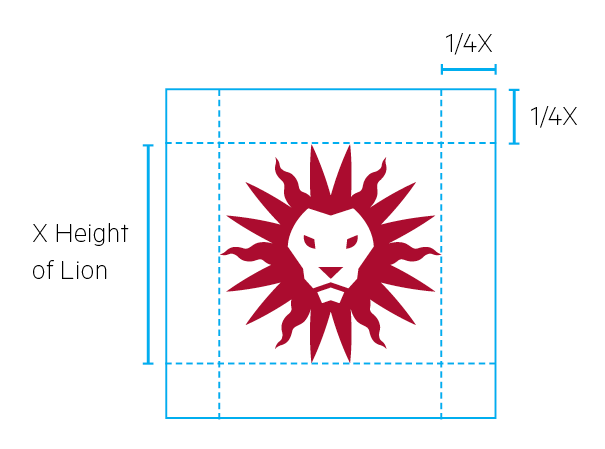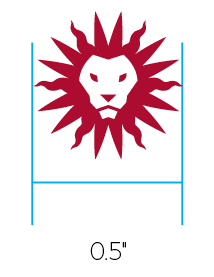
The spirit mark is a bold, uniquely LMU icon designed to inspire pride and community. Inspired by the 500-year-old Jesuit seal, its stylized lion’s mane reimagines the sunburst found in St. Ignatius’ rooms in Rome—blending tradition with energy.
Used most often in school spirit and less formal contexts, the spirit mark appears on apparel, signage, and promotional materials. It also serves as a secondary logo for LMU Athletics and can be used more flexibly than other marks.
Clear Space
Adequate clear space for the ceremonial mark is defined as 1/4 of its height extended around its perimeter. No other graphics or text should interfere with this area.

Minimum Size
The minimum width of the ceremonial mark is 0.5 inches. There is no maximum size use.

Incorrect Use
Incorrect uses of the spirit mark are shown below. Incorrect usage rules apply to all marks in the LMU identity toolkit.

Don't disproportionately scale vertically or horizontally.

Don't alter the size relationship between any elements.

Don't crop any parts of the mark.

Don't rotate the mark.

Don't alter the shape or positioning of any elements.

Don't rearrange components within the mark.

Don't add a drop shadow.

Don't add additional artwork or outlines around the mark.

Don't use unapproved colors.

Don't interchange any of the colors.

Don't display at less than 100% opacity.

Don't place the logotype over a busy or complex photograph.

Don't change or omit the white areas between colored elements.

Don't make the colored elements white. The white "Sticker" version of the mark is different.